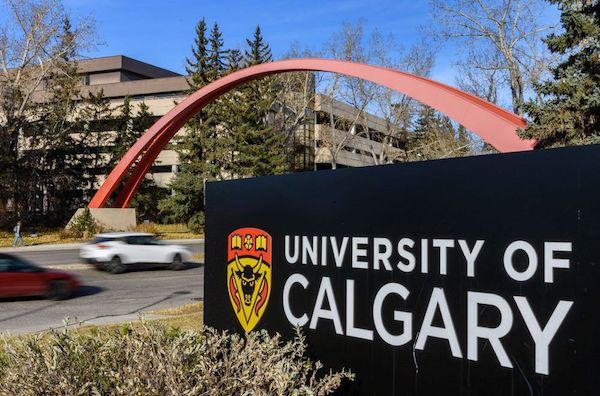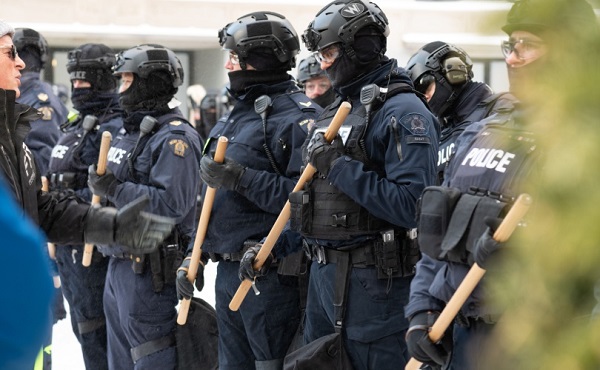Business
New capital gains hike won’t work as claimed but will harm the economy

From the Fraser Institute
By Alex Whalen and Jake Fuss
Capital taxes are among the most economically-damaging forms of taxation precisely because they reduce the incentive to innovate and invest.
Amid a federal budget riddled with red ink and tax hikes, the Trudeau government has increased capital gains taxes. The move will be disastrous for Canada’s growth prospects and its already-lagging investment climate, and to make matters worse, research suggests it won’t work as planned.
Currently, individuals and businesses who sell a capital asset in Canada incur capital gains taxes at a 50 per cent inclusion rate, which means that 50 per cent of the gain in the asset’s value is subject to taxation at the individual or business’ marginal tax rate. The Trudeau government is raising this inclusion rate to 66.6 per cent for all businesses, trusts and individuals with capital gains over $250,000.
The problems with hiking capital gains taxes are numerous.
First, capital gains are taxed on a “realization” basis, which means the investor does not incur capital gains taxes until the asset is sold. According to empirical evidence, this creates a “lock-in” effect where investors have an incentive to keep their capital invested in a particular asset when they might otherwise sell.
For example, investors may delay selling capital assets because they anticipate a change in government and a reversal back to the previous inclusion rate. This means the Trudeau government is likely overestimating the potential revenue gains from its capital gains tax hike, given that individual investors will adjust the timing of their asset sales in response to the tax hike.
Second, the lock-in effect creates a drag on economic growth as it incentivises investors to hold off selling their assets when they otherwise might, preventing capital from being deployed to its most productive use and therefore reducing growth.
And Canada’s growth prospects and investment climate have both been in decline. Canada currently faces the lowest growth prospects among all OECD countries in terms of GDP per person. Further, between 2014 and 2021, business investment (adjusted for inflation) in Canada declined by $43.7 billion. Hiking taxes on capital will make both pressing issues worse.
Contrary to the government’s framing—that this move only affects the wealthy—lagging business investment and slow growth affect all Canadians through lower incomes and living standards. Capital taxes are among the most economically-damaging forms of taxation precisely because they reduce the incentive to innovate and invest. And while taxes on capital do raise revenue, the economic costs exceed the amount of tax collected.
Previous governments in Canada understood these facts. In the 2000 federal budget, then-finance minister Paul Martin said a “key factor contributing to the difficulty of raising capital by new start-ups is the fact that individuals who sell existing investments and reinvest in others must pay tax on any realized capital gains,” an explicit acknowledgement of the lock-in effect and costs of capital gains taxes. Further, that Liberal government reduced the capital gains inclusion rate, acknowledging the importance of a strong investment climate.
At a time when Canada badly needs to improve the incentives to invest, the Trudeau government’s 2024 budget has introduced a damaging tax hike. In delivering the budget, Finance Minister Chrystia Freeland said “Canada, a growing country, needs to make investments in our country and in Canadians right now.” Individuals and businesses across the country likely agree on the importance of investment. Hiking capital gains taxes will achieve the exact opposite effect.
Authors:
Business
The Real Reason Tuition Keeps Going Up at Canada’s Universities

Since 2020, steep increases to tuition fees have triggered large-scale protests by the students who pay those fees at the University of Alberta, University of Calgary, University of British Columbia and at McGill University and Concordia University in Quebec, among many other schools. (A freeze on tuition fees in Ontario since 2019 explains that province’s absence from the list.)
It’s true that tuition has been on the rise. According to Statistics Canada , between 2006-2007 and 2024-2025, the average undergraduate full-year tuition fee at a Canadian university grew from approximately $4,900 to $7,360.
But do the students really know what’s behind the increases?
University administrators looking to deflect responsibility like to blame provincial government cutbacks to post-secondary funding. Here, the evidence is unconvincing. Going back two decades, nationwide full-time equivalent (FTE) student transfer payments from provincial governments have remained essentially constant, after accounting for inflation. While government grants have remained flat, tuition fees are up.
The issue, then, is where all this extra money is going – and whether it benefits students. Last year researcher and consultant Alex Usher took a close look at the budgeting preferences of universities on a nationwide basis. He found that between 2016-2017 and 2021-2022 the spending category of “Administration” – which comprises the non-teaching, bureaucratic operations of a university – grew by 15 percent. Curiously enough “Instruction,” the component of a university that most people would consider to be its core function, was among the slowest growing categories, at a mere 3 percent. This top-heavy tendency for universities is widely known as “administrative bloat”.
Administrative bloat has been a problem at Canadian universities for decades and the topic of much debate on campus. In 2001, for example, the average top-tier university in Canada spent $44 million (in 2019 dollars) on central administration. By 2019 this had more than doubled to $93 million, supporting Usher’s shorter-term observations. Usher calculated that the size of the non-academic cohort at universities has increased by between 85 percent and 170 percent over the past 20 years.
While some level of administration is obviously necessary to operate any post-secondary institution, the current scale and role of campus bureaucracies is fundamentally different from the experience of past decades. The ranks of university administration used to be filled largely with tenured professors who would return to teaching after a few terms of service. Today, the administrative ranks are largely comprised of a professional cadre of bureaucrats. (They are higher paid too; teaching faculty are currently paid about 10 percent less than non-academic personnel.)
This ever-larger administrative state is increasingly displacing the university’s core academic function. As law professor Todd Zywicki notes, “Even as the army of bureaucrats has grown like kudzu over traditional ivy walls, full-time faculty are increasingly being displaced by adjunct professors and other part-time professors who are taking on a greater share of teaching responsibilities than in the past.” While Zywicki is writing about the American experience, his observations hold equally well for Canada.
So while tuition fees keep going up, this doesn’t necessarily benefit the students paying those higher fees. American research shows spending on administration and student fees are not correlated with higher graduation rates. Canada’s huge multi-decade run-up in administrative expenditures is at best doing nothing and at worst harming our universities’ performance and reputations. Of Canada’s 15 leading research universities, 13 have fallen in the global Quality School rankings since 2010. It seems a troubling trend.
And no discussion of administrative bloat today can ignore the elephant in the corner: diversity, equity and inclusion (DEI). Writing in the National Post, Peter MacKinnon, past president of the University of Saskatchewan, draws a straight line from administrative bloat to the current infestation of DEI policies on Canadian campuses.
The same thing is going on at universities across Canada that have permanent DEI offices and bureaucracies, including at UBC, the University of Calgary, University of Waterloo, Western University, Dalhousie University and Thompson Rivers University. As a C2C Journal article explains, DEI offices and programs offer no meaningful benefit to student success or the broader university community. Rather, they damage a school’s reputation by shifting focus away from credible scientific pursuits to identity politics and victimology.
With universities apparently unable to restrain the growth of their administrative Leviathan, there may be little alternative but to impose discipline from the outside. This should begin with greater transparency.
Former university administrator William Doswell Smith highlights a “Golden Rule” for universities and other non-profit institutions: that fixed costs (such as central administration) must never be allowed to rise faster than variable costs (those related to the student population). As an example of what can happen when Smith’s Golden Rule is ignored, consider the fate of Laurentian University in Sudbury, Ontario.
In early 2021 Laurentian announced it was seeking bankruptcy protection under the Companies’ Creditors Arrangement Act, under which a court-appointed manager directs the operations of the delinquent organization. Laurentian then eliminated 76 academic programs, terminated 195 staff and faculty, and ended its relationships with three nearby schools.
Ontario’s Auditor-General Bonnie Lysak found that the primary cause of the school’s financial crisis were ill-considered capital investments. The administrators’ big dreams essentially bankrupted the university.
The lesson is clear: if universities refuse to correct the out-of-control growth of their administrations, then fiscal discipline will eventually be forced upon them. A reckoning is coming for these bloated, profligate schools. The solution to higher tuition is not increasing funding. It’s fewer administrators.
The original, full-length version of this article was recently published in C2C Journal.
Jonathan Barazzutti is an economics student at the University of Calgary. He was the winner of the 2nd Annual Patricia Trottier and Gwyn Morgan Student Essay Contest co-sponsored by C2C Journal.
Business
The Truth Is Buried Under Sechelt’s Unproven Graves

From the Frontier Centre for Public Policy
Millions spent, no exhumations. What are we actually mourning?
From Aug. 15 to 17, 2025, the Canadian flag flew at half-mast above the British Columbia legislature. The stated reason: to honour the shíshálh Nation and mourn the alleged discovery of 81 unmarked graves of Indigenous children near the former St. Augustine’s Residential School in Sechelt.
But unlike genuine mourning, this display of grief lacked a body, a name or a single verifiable piece of evidence. As MLA Tara Armstrong rightly observed in her open letter to the Speaker, this symbolic act was “shameful”—a gesture unmoored from fact, driven by rumour, emotion and political inertia.
The flag was lowered in response to claims from University of Saskatchewan archaeologist Dr. Terry Clark. According to announcements from both 2023 and 2025, Dr. Clark “discovered” 81 unmarked graves using ground-penetrating radar—a tool that detects changes in soil, not bones. Its signals require interpretation—and in this case, the necessary context never arrived.
Even more concerning, there has been no release of names or records. Chief Lenora Joe of the shíshálh Nation said the names of the children are “well known” to Elders. Yet none have been made public: not a single missing child reported, no date of disappearance, no death certificate, not even a family willing to speak openly.
Instead, we’re being asked to accept deeply held recollections as conclusive proof—without corroborating evidence.
The original 40 anomalies—first announced in April 2023—appear to be located beneath the paved parking lot of the band’s administrative and cultural hub, the House of Hewhiwus complex. This land has been excavated before. At no point were any human remains discovered. As former Chief Warren Paull confirmed, “remains were never found” and the stories circulating then “don’t include burial at all.” The pattern of red dots in the band’s video—a tidy grid beneath the asphalt—looked less like sacred ground and more like a plumbing schematic.
The grief narrative, meanwhile, was presented with great care. Professionally produced videos showed solemn Elders, blurred radar images and mournful speeches—all designed to evoke emotion while discouraging inquiry. In one video, Chief Joe warned that asking questions would “cause trauma.”
But reconciliation doesn’t mean blind acceptance. Silencing questions isn’t healing—it risks turning reconciliation into a one-way narrative.
In a 2025 follow-up, Dr. Clark reported another 41 anomalies—this time likely in the community’s own cemetery on Sinku Drive. Brief footage confirms that GPR was conducted among existing gravesites, where decayed wooden markers would naturally result in “unmarked” burials. As Tara Armstrong noted, finding undocumented graves in or near a cemetery is about as surprising as spotting seagulls at a landfill.
Even so, political leaders continued to validate the narrative.
The B.C. government endorsed the claims with another round of symbolic mourning. In doing so, it lent the power of the state to what increasingly resembles collective fiction. Since 2021, similar claims across Canada have triggered government apologies, funding announcements and media headlines—often without physical evidence.
Residential schools were bureaucratic institutions. They kept meticulous enrolment and death logs. The Truth and Reconciliation Commission, with eight years of access to these archives, conducted more than 6,500 interviews and reviewed thousands of documents. It found no cases of children who disappeared without a trace. Despite this, $2.6 million in federal funds was spent in 2025 alone on the Sechelt investigation.
This isn’t reconciliation: it’s mythmaking dressed up as healing. Worse still, it undermines real tragedies by replacing verifiable history with folklore dressed up in government robes.
Governments should not promote unverified stories with ceremonial gestures. Flags lowered at half-mast should honour actual deaths, not narrative convenience. Public policy, especially around historical reckoning, must be rooted in fact, not feelings.
If reconciliation is to mean anything, it must be anchored in shared truth. And the truth is, we cannot mourn 81 phantom children because they almost certainly never existed.
Canadians must start insisting on evidence. The standard of proof should be no different here than in any serious allegation. The principle that underpins our justice system—innocent until proven guilty—must also guide our view of history.
State-sponsored guilt rituals disconnected from verifiable fact are not justice.
They are theatre.
And not even good theatre.
Marco Navarro-Genie is vice-president of research at the Frontier Centre for Public Policy and co-author, with Barry Cooper, of Canada’s COVID: The Story of a Pandemic Moral Panic (2023). With files from Nina Green.
-

 Automotive2 days ago
Automotive2 days agoMichigan could be a winner as companies pull back from EVs
-

 Alberta17 hours ago
Alberta17 hours agoSylvan Lake high school football coach fired for criticizing gender ideology sends legal letter to school board
-

 Crime2 days ago
Crime2 days agoCanadian teacher showed Charlie Kirk assassination video to young students, said he deserved to die
-

 Energy20 hours ago
Energy20 hours agoA Breathtaking About-Face From The IEA On Oil Investments
-

 Business2 days ago
Business2 days agoDeportations causing delays in US construction industry
-

 Alberta1 day ago
Alberta1 day agoParents group blasts Alberta government for weakening sexually explicit school book ban
-

 COVID-1918 hours ago
COVID-1918 hours agoFreedom Convoy leader slams Canadian gov’t agency for praising its treatment of protesters
-

 Frontier Centre for Public Policy1 day ago
Frontier Centre for Public Policy1 day agoBloodvein Blockade Puts Public Land Rights At Risk





